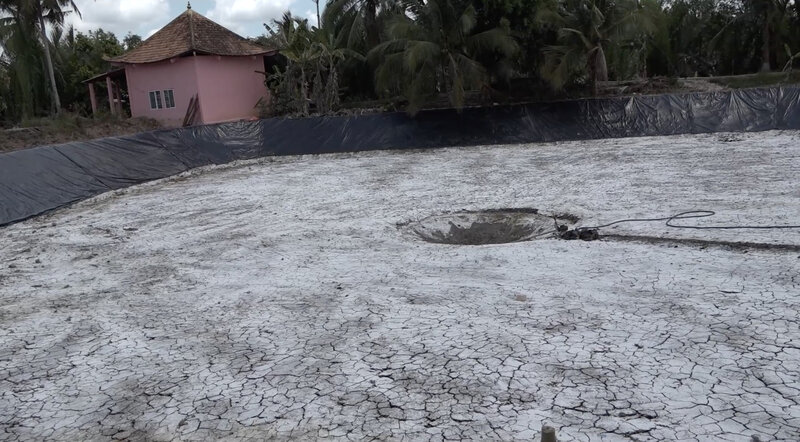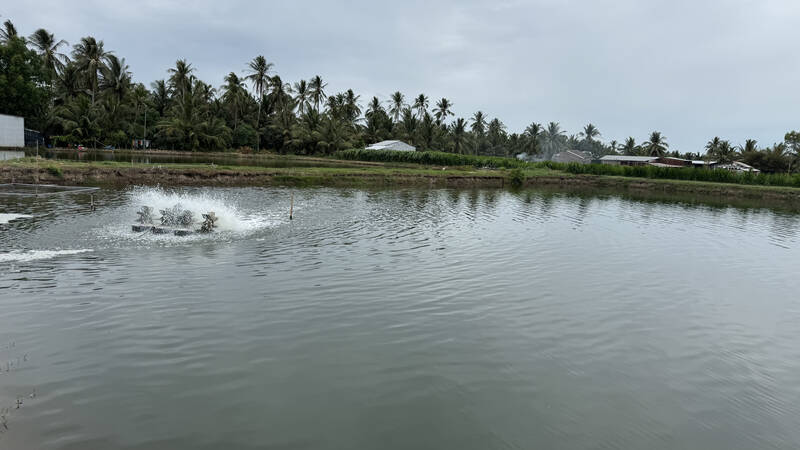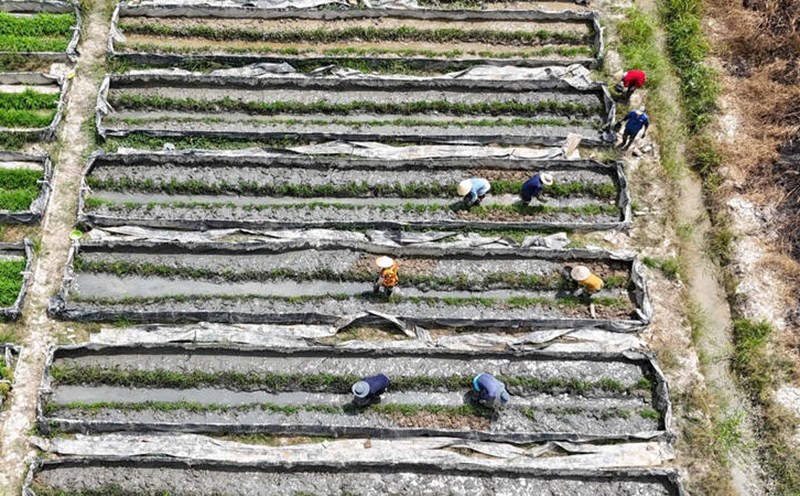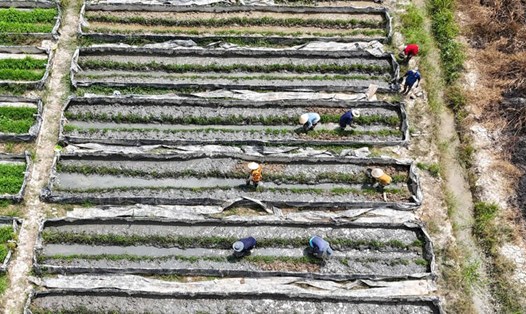switching to shrimp and catfish farming
Although salinity intrusion control measures in Tra Cu district have been effectively implemented for many years, mild salinity still has a negative impact on the productivity of snakehead fish farming in the people.
As in the case of Ms. Ta Thi Ngoc's family, a long-time snakehead fish farming household in Luu Nghiep Anh commune decided to temporarily suspend it due to consecutive losses due to the impact of saltwater and low selling prices.
Ms. Ngoc said that in her recent crop, she released snakehead fish on an area of nearly 6,000m2 in 4 ponds. However, the output is only over 60 tons, down 10 tons compared to before due to saline intrusion, causing fish to slow down and reduce productivity.
The selling price of snakehead fish nearly 2 months ago was from 35,000 - 40,000 VND/kg for fish weighing 1.5kg or more. Smaller fish have low prices from only 20,000 - 25,000 VND/kg. Although the price was 35,000 VND/kg, farmers made a profit, but the decrease in output caused the profit to not be as good as before.
"Given this situation, I decided to temporarily stop raising snakehead fish, clean the pond and switch to raising tilapia. This is a type of fish with a stable output, ensuring prices," Ms. Ngoc added.

Similarly, Mr. Tran Ngoc Tinh also faced similar difficulties. After realizing the instability in prices and snakehead fish output due to the impact of saline intrusion, he switched to raising white-leg shrimp. "After harvesting snakehead fish more than a month ago, I renovated the pond and started raising shrimp," Mr. Tinh shared.
Reducing snakehead fish farming area by more than 30%
Speaking with Lao Dong, Mr. Nguyen Van Sang - Specialist of the District Department of Agriculture and Environment - said that the whole district currently has a total snakehead fish farming area of over 262 hectares, this area has decreased by more than 30% compared to 2024.
The main reason is salinity intrusion and climate change, causing many difficulties in snakehead fish farming, decreased output, and seriously affected people's income.

According to Mr. Sang, in this difficult situation, many households have proactively switched to raising aquatic products that are better adapted to saltwater and environmental changes such as white-leg shrimp and perch.
Although this conversion requires investment costs and time to renovate ponds, this is the optimal solution to help people maintain production and stabilize income.
"The district's functional sector will continue to accompany and support people in the process of converting production models, providing appropriate farming techniques and supporting product coverage programs if any," Mr. Sang added.








